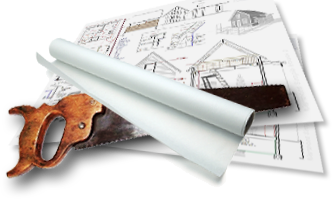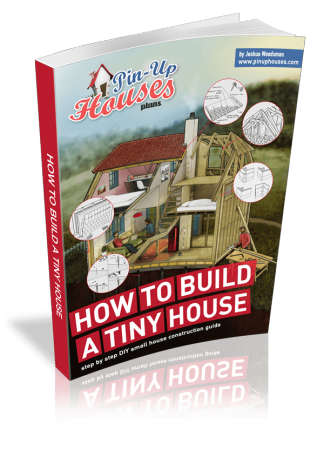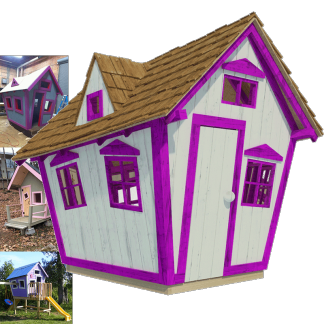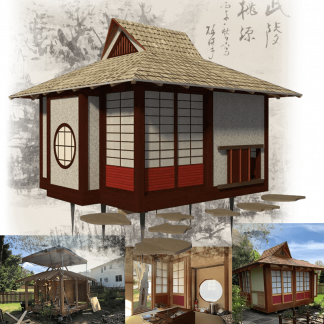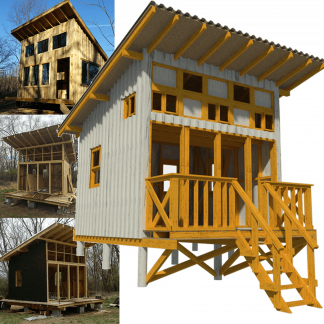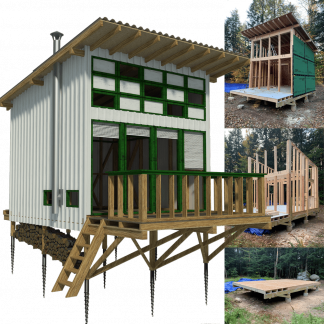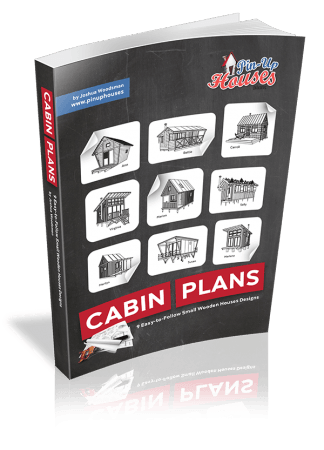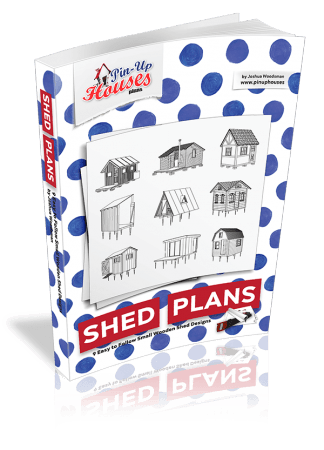Usually, building a house means lumber, cement, steel beams, brick… You know, the so-called normal materials. But when it comes to small houses, you’d be surprised at how creative some builders and designers are. The rulebook gets thrown out of the window, and you can see straw bales used for insulation and tires filled with dirt stacked into actual walls.
Why would anyone opt for something like this, you ask?
Well, part of it comes down to money.
If you’re building a tiny house, you don’t have a mountain of cash to spend, so you try to save where you can. But money isn’t all there is to it. People also want to be innovative and prove that not every house has to fit the same cookie-cutter mold. Every seemingly strange choice comes with a story and, believe it or not, some of these experiments hold up great.
Others… Not so much.
8 ‘Weird’ Materials That Found Their Way Into Small Homes
The reason why building small houses is so interesting is that you’re free to play and experiment. You don’t have that insane cost of a full-scale house hanging over your head, so why not get creative?
Here are some materials that have been used in ways that are surprising.
Straw Bales
Construction using straw bales goes back more than a century, especially in rural America, where bales were cheap and easy to find. Builders quickly discovered how exceptional straw is at insulating spaces.
Plus, it’s renewable, and you can’t beat the rustic charm it has.
But it’s not all pretty with straw bales. They need to be protected from any moisture because, if it gets wet, pests and mold will throw a party in it. And to make them stay durable, you’ll usually have to slap thick plaster or lime render on the walls.
Tires
Tires are almost iconic when it comes to building walls.
You pack them with earth, stack them, and you have a practically indestructible wall that provides thermal mass. Their main selling point is that you can repurpose something that would otherwise end up in a landfill.
The problem is, tires are anything but easy to work with. They’re extremely heavy as it is, and then you still need to fill them, which makes them even heavier. Then you need to place them just right and seal them.
If you don’t seal them well, you’ll also need to deal with chemical leaching.
Shipping Containers
Shipping containers are really popular for small modular houses because they’re very durable.
They’re built to survive harsh conditions at sea, so you can bet they’ll handle being turned into a home. They’re quick to set up, and they’re relatively cheap. Also, they have that nice industrial aesthetic that’s very Pinterest-y.
On the downside, they’re not exactly made to be comfortable, so… They aren’t. Without some serious insulation, you’ll cook inside during summer and freeze into an icicle in winter. And because they’re narrow, you don’t have a lot of room for creativity when it comes to the layout of the house inside.
Here’s also the potential issue of the concrete upon which they’re placed.
The slabs can shift and settle, so you might find yourself researching ‘concrete lifting near me‘ online to make your container house actually livable.
Clay and Cob Mixtures
Clay and cob mixtures are some of the oldest building techniques in the world.
You blend clay, sand, and straw, and the result is thick, hand-built walls that are cheap and can be easily customized. The walls’ breath, which is great for controlling humidity, and their earthy appearance, are pretty aesthetic.
However, cob is incredibly sensitive to the weather.
If you don’t protect it, rain will erode it and, over time, walls could crack and settle unevenly.
Glass Bottles
Yup. You read that right – glass bottles.
Believe it or not, some of the most beautiful small homes have glass bottles in their walls. When sunlight gets through, the bottles create patterns of color and light that look absolutely unreal. Builders love this unconventional approach because it turns waste into beauty and, best of all, it’s cheap.
As far as problems go, the biggest one is that glass bottles obviously don’t have the structural strength traditional materials have. They also don’t insulate well, and they need to be very carefully placed in mortar or concrete to be safe. In most builds, they’re more decorative than anything else.
Conclusion
Small houses equal big creativity, but unless you get back down to Earth for a moment and take care of some basics like insulation and weatherproofing, your creative little house will turn into a mess with the first rain. Or the first frost. Or the first heatwave. Rr just really, really strong wind.
Not every experiment will last forever, and some choices create some long-term problems, but this variety is proof that building a small house has as much to do with imagination as it does with construction.

